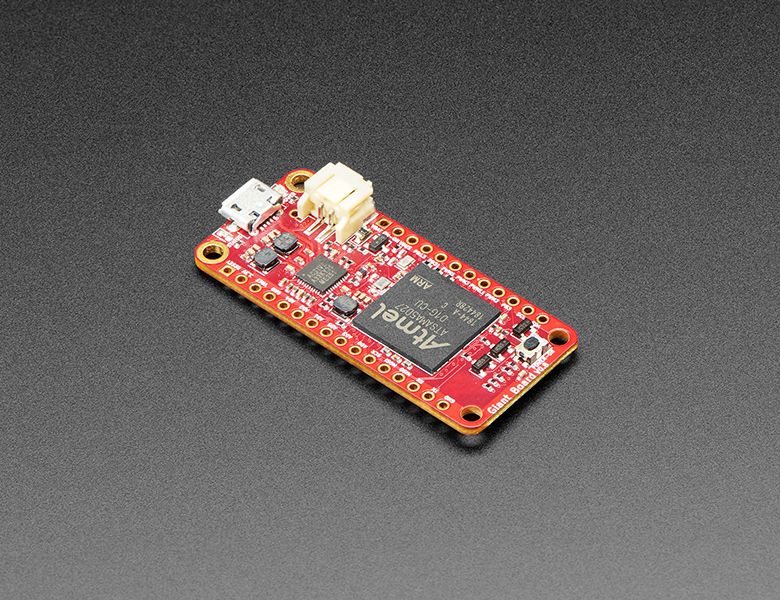
Giant Board by Groboards
The Giant Board is a super tiny single-board computer (SBC) based on the Adafruit Feather form factor. We always want more power in a smaller package, and the Giant Board delivers! It provides a small, powerful platform that is compatible with a wide range of pre-existing accessories. FeatherWing support makes the Giant Board a flexible, drop-in component for most Feather based projects.
We all love our microcontrollers, but in some cases they just don’t have the resources we need to carry out the projects we have in mind. By squeezing the power of an SBC into a package the size of a microcontroller board, the Giant Board relaxes memory, storage, and processing constraints and allows you to take your projects to the next level.
The Giant Board fills the gap between microcontrollers and other single-board computers. It makes a great alternative to a Raspberry Pi or BeagleBone in a space constrained project where you need more power than a typical microcontroller can provide. The Giant Board is based on a form factor that is traditionally used for microcontrollers, so power consumption is important, which is why the Giant Board offers low-power modes.
To leverage all that powerful hardware, the Giant Board runs Linux. Not just any Linux, but full Debian Linux! This gives developers and users access to an endless number of applications and libraries for their projects.
- Processor: Microchip SAMA5D2 ARM® Cortex®-A5 Processor 500 MHz
- Memory: 128 MB DDR2 RAM
- Storage: microSD card
- Sensing: 6 x 12-bit ADC with 3.3 V reference and external trigger
- Actuation: 4 x 16-bit PWM with external trigger
- Connectivity: 1 x I²C, 1 x SPI, 1 x UART, more with Flexcom
- Power: via USB, with support for LiPo batteries
- Operating System: mainline Linux kernel
Purchase
Contribute
Have some info to add for this board? Edit the source for this page here.
Adafruit Blinka Installation
We use a special library called adafruit_blinka (named after Blinka, the CircuitPython mascot) to provide the layer that translates the CircuitPython hardware API to whatever library the Linux board provides.
For example, on Raspberry Pi we use the python RPi.GPIO library. For any I2C interfacing we'll use ioctl messages to the /dev/i2c device. For SPI we'll use the spidev python library, etc. These details don't matter so much because they all happen underneath the adafruit_blinka layer.
